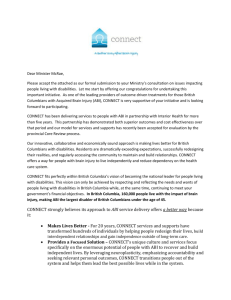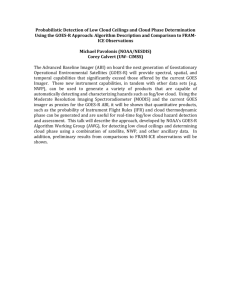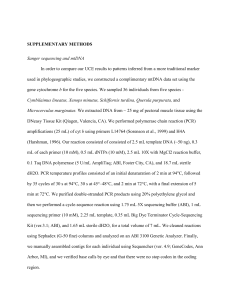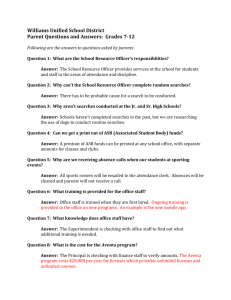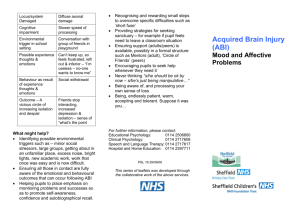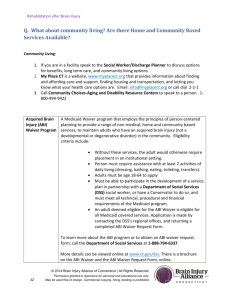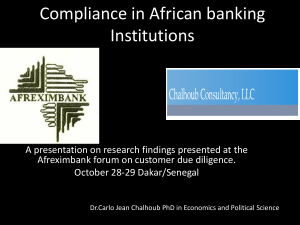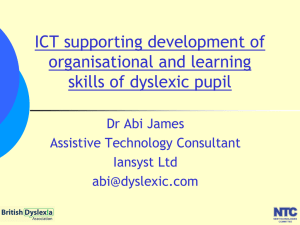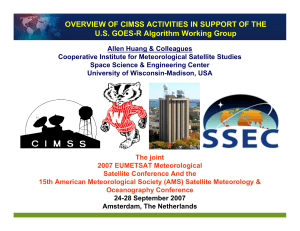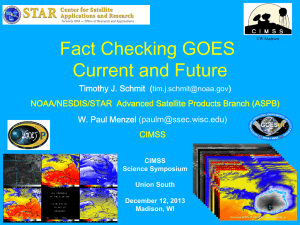NOAA GOES-R Air Quality Proving Ground (AQPG) Advisory Group
advertisement
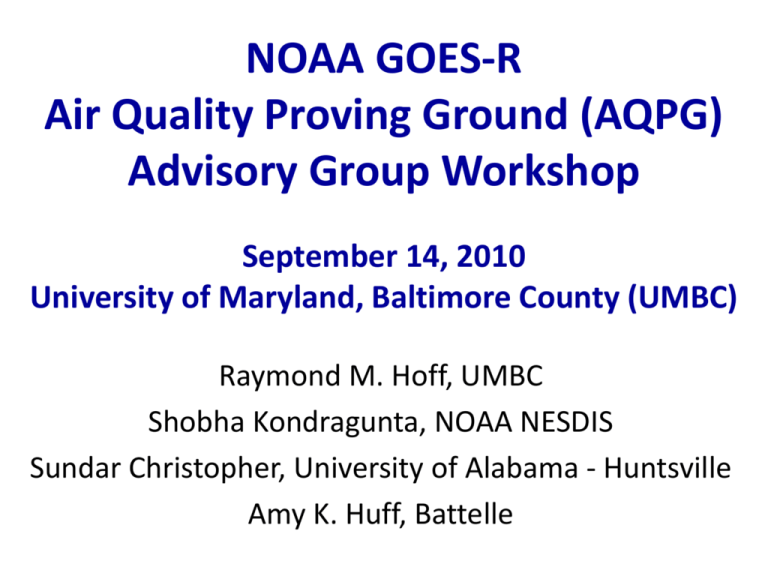
NOAA GOES-R Air Quality Proving Ground (AQPG) Advisory Group Workshop September 14, 2010 University of Maryland, Baltimore County (UMBC) Raymond M. Hoff, UMBC Shobha Kondragunta, NOAA NESDIS Sundar Christopher, University of Alabama - Huntsville Amy K. Huff, Battelle Purpose of the Workshop • The AQPG has assembled an Advisory Group of air quality forecasters and analysts to provide input on GOES-R air quality products. • The workshop was a forum for the AQPG technical team and Advisory Group to meet and discuss the latest work on the project. • The Advisory Group also had the opportunity to review AQPG case studies and examples of simulated GOES-R ABI data. • The Advisory Group provided feedback on simulated ABI data and discussed options for an internet delivery system for GOES-R air quality products. Workshop Participants • 39 air quality experts participated in the workshop: – 15 state/local air quality forecasters from across the country – 2 air quality modelers – 3 EPA staff, representing OAQPS, Region 3, and the National Exposure Research Laboratory – 3 NOAA National Weather Service staff – 10 AQPG team members – 6 additional NOAA NESDIS staff Morning: Overview of GOES-R and AQPG • To give the participants background on the AQPG project, the workshop opened with talks on the GOES-R satellite, ABI, and simulated ABI data: – NOAA’s GOES-R Proving Ground (Steve Goodman, NOAA NESDIS) – Overview of the GOES-R Satellite and ABI (Mitch Goldberg, NOAA NESDIS) – Air Quality Products from the ABI (Shobha Kondragunta, NOAA NESDIS) – Development of Proxy ABI Data for the AQPG (Brad Pierce, NOAA NESDIS) – Case Studies of Simulated ABI Data (Ray Hoff, UMBC) Special Presentations by AQ Forecasters • To help the AQPG team understand user needs, air quality forecasters gave a series of presentations about air quality forecasting and analysis across the country. The talks highlighted how satellite observations fit into the forecasting process: – Overview of Air Quality Forecasting (Bill Ryan, Penn State University - Philadelphia, PA forecaster) – East Coast Forecasting Considerations (Duc Nguyen, Maryland Department of the Environment) – Lake Michigan/Midwest Forecasting Issues (Bill Adamski, Wisconsin Department of Natural Resources) – Satellite Data for Forecasting – a West Coast Perspective (Kevin Durkee, South Coast Air Quality Management District) – A Recent PM2.5 Episode over Georgia (Bill Murphey, Georgia Department of Natural Resources) Breakout Session: Review of Case Study Data • Participants broke into groups of 2-3 and reviewed a Power Point file that contained simulated ABI AOD data and supplemental information about an air quality event on 8/24/06. • Participants answered questions on a worksheet about the temporal and spatial resolution, latency, geographic coverage, visualization, and formatting of ABI data. Afternoon: Group Discussions • After participants reviewed simulated ABI data, the AQPG team led a group discussion about users’ needs and the ABI data. User requests include: – – – – – 15-30 min temporal resolution 2 km spatial resolution 30 min - 1 hr data latency loops and still images of data geographic coverage of the CONUS, Canada, Mexico and Central America; ability to zoom-in on areas of interest – access to ABI data validation information (accuracy, bias) – easy access to archived ABI data/images Feedback from Workshop Participants The participants really enjoyed the workshop! They praised the content, organization, and meeting facilities. • What was your favorite part of the workshop? – NOAA and EPA participants thought that the presentations by the AQ forecasters were most useful. – The AQ forecasters/modelers liked the review of simulated ABI data and the group discussions the best. • What was your least favorite part of the workshop? – Many participants had no “least favorite” part – they liked everything. – Some participants felt the presentations on GOES-R and the ABI were too technical, while others thought they were too simplistic. Feedback from Workshop Participants • Based on your experience at this year’s workshop, will you attend next year? – Almost all of the participants indicated that they will attend the follow-up workshop in September 2011. – Participants stressed the importance of travel funding from NOAA – without funding, most could not attend the workshop. • Please list any suggestions for improving the workshop. – The majority of participants had no suggestions. – Several participants asked for more case studies of ABI data. – One participant requested a presentation on IT considerations (data rates, gigabytes per day, storage requirements, archive requirements, file size). – One participant requested more information about the technical principles of reflectance in each ABI band and the applications for each band. Next Steps for the GOES-R AQPG • We expect to hold at least one training on simulated ABI data for end users at a major conference (possibly the 2011 National Air Quality Conference). • We will conduct the second annual AQPG Advisory Group workshop in September 2011, likely at UMBC, to discuss advances in the project. • In summer 2011, we plan to have an AQPG testbed running for a 1-2 week intensive period. The testbed will provide simulated ABI data in near real-time, which we will provide to select members of the Advisory Group for their feedback. Acknowledgements • • • • • • Steve Goodman Mitch Goldberg Brad Pierce Mark Ruminski and Matt Seybold Chuanyu Xu and Pubu Ciren Funding provided by NOAA grants: – NA09NES4400022 (2009-2010) – NA10NES4280016 (2010-2011)
